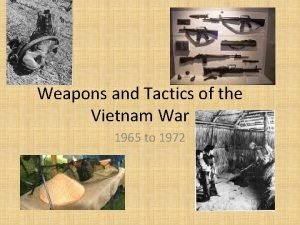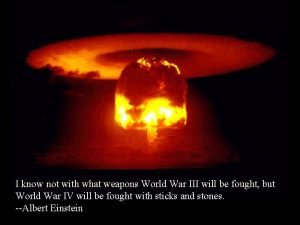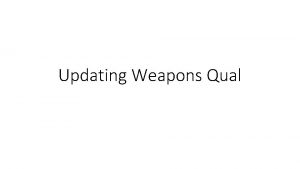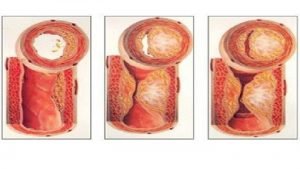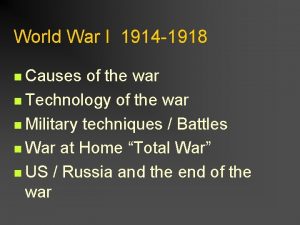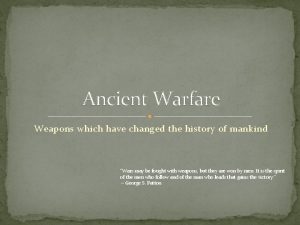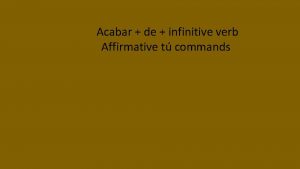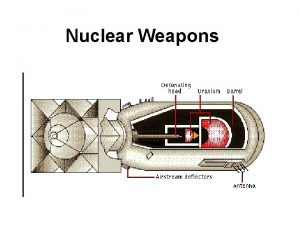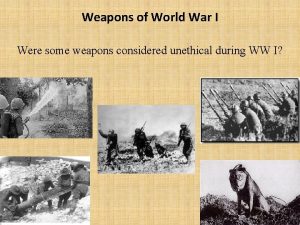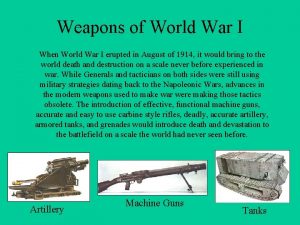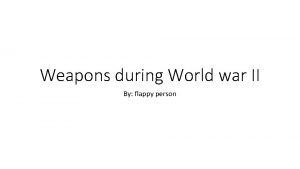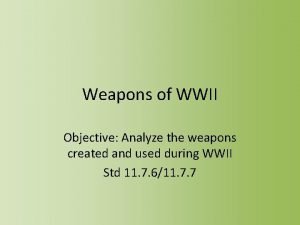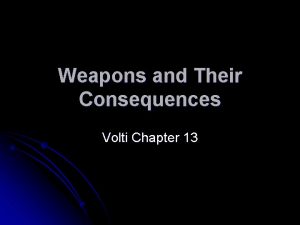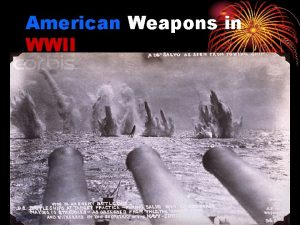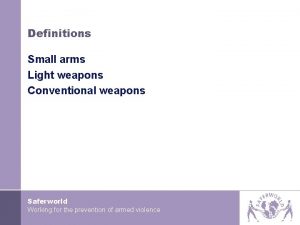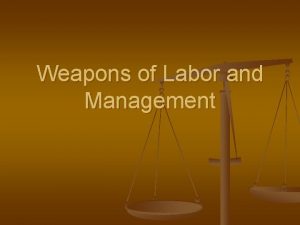World War I Weapons During World War I













- Slides: 13

World War I Weapons

During World War I most of the fighting happened in the trenches. The armies dug deep trenches into the ground and faced each other and used machine guns to fire 300 to 350 rounds per minute and required 4 -6 men to operate them. "The enemy started to advance in mass down the railway cutting, about 800 yards off, and Maurice Dease fired his two machine-guns into them and absolutely mowed them down. I should judge without exaggeration that he killed at least 500 in two minutes. The whole cutting was full of bodies and this cheered us all up. " (Tower 10) The machine gun was one of the decisive technologies during World War I. Picture: British Vickers machine gun crew on the Western Front.

GRENADES Mills Bomb invented 1915 by British; 75 million were used during World War One Hand held explosive that is thrown at enemy. Explodes and shoots shrapnel.

ARTILLERY Loading a 15 -inch howitzer Passchendaele village, before and after the 3 rd Battle of Ypres. The devastation of Ypres barely a building was left undamaged by shell bombardment Guns capable of shooting miles away. Shells explode and shoot shrapnel everywhere! In August 1914, the British Army had 1, 226 of the 18 pounders. Such was its reliability, that by the end of the war, the army had 9, 424 in service The 18 pounder could fire shells of high explosives of between 4. 6 kg and 8. 4 kg. The 18 pounder had a range of 5, 966 meters

German Schwerer Kampfwagen A 7 V • idea of the tank inspired by farming vehicles that used caterpillar tracks. • Armored vehicles were already made, but they weren’t able to cross trenches. • The first tank was used by the British at the Battle of Somme. The name tank came when the British tried to hide the armored cars in crates marked as “Tanks”. • Maximum speed 3 mph. Gunners and drivers of a Canadian Army motor machine gun detachment cleaning their weapons and vehicles after a successful operation in the Somme area. Breaking through Germans with a captured British tank; the tracks at the front are higher in order to Climbing and crossing climb obstacles, and the side-mounted guns keep the centre of gravity low.

• GAS In World War poison gas was often used. • Introduced by the German army in 1915 at the Battle of Ypres, the gas could be shot out of a special gun or be bombed from planes. • The gas was made up of many different chemicals, including Chlorine and Phosgene (Mustard Gas). Anyone breathing it became very sick or was killed instantly. Australian infantry with gas masks, Ypres, 1917. German warning bell for gas.

SUBMARINES The submarines were not considered much of a threat at the beginning of World War I, but it wasn’t long until they became a major threat for both sides. A submarine is a ship that travels under water. Germany’s were called U-Boats. Most submarines are used in the war to attack enemy ships with torpedoes.

The Flamethrower • The Flamethrower, which brought horror to the French and British soldiers during WWI, was first used by the German army. The flame-thrower used pressurized air, carbon dioxide or nitrogen to force oil through a nozzle. Ignited by a small charge, the oil became a jet of flame. • The basic idea of the flamethrower was to spread flames throughout the battlefield or trench to kill enemy infantry.

Barbed Wire • Defensive purpose. • All over no man’s land. • Soldiers would get caught in it and become easy targets for machine gunners and artillery barrages.

"We do not consider that aeroplanes will be of any possible use for war purposes" — Richard Haldane British Secretary of War, 1910 88 Zeppelins were built during the war. Over 60 were lost, roughly evenly divided between accident and enemy action. Fiftyone raids were undertaken, in which 5, 806 bombs were dropped, killing 557 people and injuring 1, 358.

World War I Planes • • WWI was the first war to have airplanes used as weapons. This changed the way wars were fought. The planes were quite small and were made from wood and canvas and thus were quite fragile and crashed easily Planes became fighter aircraft armed with machine guns and bombs; they were also used for reconnaissance work Pilots known as “aces” would often engage enemy aircraft in the air, in “dogfights” Bristol fighter bi-plane, 1917 (British)

The Red Baron Manfred von Richthoven, known as “The Red Baron” was an elite German fighter pilot famous for his ability in dogfights; he was eventually shot down and killed by a Canadian ace fighter. The Red Baron was famous for the Fokker Triplane that he flew with great success.

Canadian Flying Ace: Billy Bishop as a cadet, ca. 1914 – age 20 • Here is Billy Bishop "a man incapable of fear" according to one American ace - and a Nieuport 17 • Bishop totaled 47 “kills” during WWI and earned a Victoria Cross medal for bravery
 Us weapons vietnam war
Us weapons vietnam war Weapons of the cold war diagram
Weapons of the cold war diagram This world war 2 cartoon was used to encourage americans to
This world war 2 cartoon was used to encourage americans to Iwq option
Iwq option Make tabs for your leaders book
Make tabs for your leaders book Mesopotamia tools and weapons
Mesopotamia tools and weapons Ephesians weapons of warfare
Ephesians weapons of warfare Weapons of righteousness
Weapons of righteousness The weapons we fight with
The weapons we fight with Weapons of wwi
Weapons of wwi Weapons
Weapons Jumano weapons
Jumano weapons Ancient warfare weapons
Ancient warfare weapons Abrir usted command
Abrir usted command
